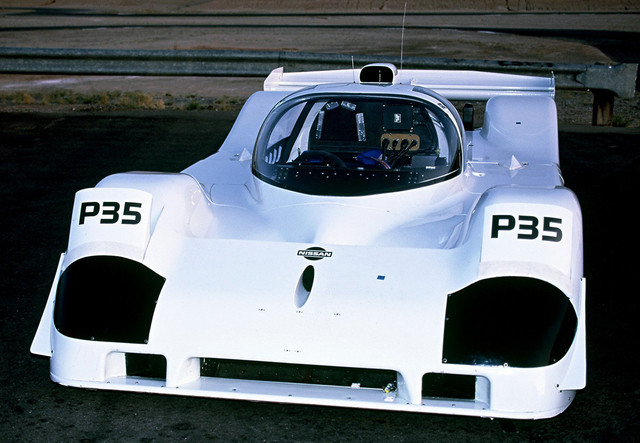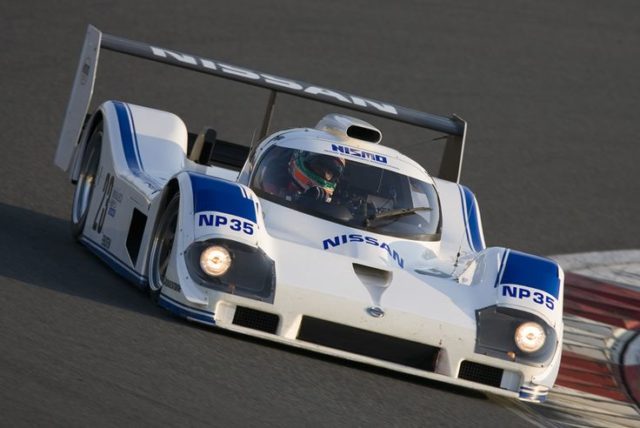Borne out of an era when the rules were relaxed and budgets were astronomical, Nissan’s NP35 could’ve been something special. Unfortunately for the rules of the era and an economy which was nearing its collapse, the NP35 never saw much action on track, but nevertheless showed what a Japanese giant could do at the peak of their powers.
Before the asset bubble burst, Nissan was, like many of the other Japanese automotive titans, developing plenty of new technologies through motorsport and not shy about dumping fortunes into it. The late eighties and early nineties were a golden time for these sorts of companies, who took their cause to the major European manufacturers, and like Mazda, some of these companies enjoyed great success.
Made from a hybrid aluminum-carbon, the first couple cars were stiff, light, and readily producible – a full carbon tub would’ve taken too long to meet their timeline. In fact, the first versions used an aluminum tub with carbon crash structures and seat back units.
Interestingly, Nissan wouldn’t allow the designers to dyno-test the 3.5-liter V12, but the predicted 620 horsepower turned out to be a meager ~500 after coast-down acceleration testing and drag testing. That minimal power was not ideal, but it somewhat made up for the lack of thrust with an incredible exhaust note – it sounded like a wild animal, especially during the downshifts at 3:09.
In Nissan’s defense, an undertaking of this magnitude, even for a titan like Nissan, is no mean feat. Building an in-house V12 designed for long-distance racing is a major strain on resources, which is why it’s so striking the rest of the car was as capable as it was.
When IMSA legend Johnny O’Connell gave the American-spec P35 a test at Daytona and was startled with the performance. Despite the lack of power, the car managed laps in the 1:38 range. As O’Connell remarked “the car simply had no power! But in the corners and under braking the P35 was unbelievable!”

Massive intakes from the turbocharged predecessors had disappeared, and a streamlined shape replaced them.
Between the North American IMSA attempts and the Japanese All Japan Sports Car Championship, Nissan had their hands full. For the Japanese efforts, NISMO eventually developed a sprint version, called the NP35. The motor produced more power, and the wheelbase was shortened by 50 mm. Every night, Nissan Japan was sent every CAD file and briefing detailing the development of the P35 and the Japanese NP car was subsequently upgraded.
Wind tunnel testing showed over 10,000 pounds of downforce at 200 miles per hour with 1,663 pounds of drag; the potential was incredible. However, the GTP series this car was planned to partake in was scrapped, and Nissan turned their attentions to Indycar for the ’93 season. Then the bubble popped – and the sports car effort, as well as the Indycar attempt, went down the drain.
Like so many ambitious projects, this particular gem never saw much success; just a bit of testing and some back-of-the-pack racing in Japan. The level of downforce and efficiency reached in that era might not be met again, but it’s amazing to see what an engineer’s wonderland it was back then.






















